THE MAGIC AND MYSTERY OF ORMUS ELEMENTS
by Roger Taylor, PhD, BVSc
Extracted from Nexus Magazine, FEBRUARY – MARCH 2007
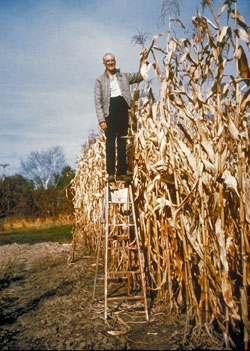 A concentrate of special elements abundant in sea water has exciting potential in improving the soil, increasing crop yields, assisting human and animal health, and even in combatting climate change.
A concentrate of special elements abundant in sea water has exciting potential in improving the soil, increasing crop yields, assisting human and animal health, and even in combatting climate change.
A POSSIBLE NEW STATE OF MATTER WITH PROMISE FOR AGRICULTURE AND HEALTH
This article introduces a recent and so far little-known discovery which could be of great importance for the future of the world. But the scientific stakes are high: if these claims are fully borne out, we should have to take cognisance of a group of substances — probably chemical elements — whose very existence up till now has not been suspected. It is for these that the name ORMUS has been coined. Some of the highly controversial ideas about what they are, and about their extraordinary chemistry and physics, are outlined below. But first, the practical import of the discovery consists in the beneficial effect of these elements on plant and animal life.
As detailed below, the effect of supplementing these elements on the growth of plant crops is no less than phenomenal. Remarkable benefits to human and animal health have also been obtained.
David Hudson’s discovery of ORMEs.
The story of the discovery begins in the late 1970s with a rich cotton farmer in Arizona named David Hudson. Because the volcanic soil in that region had unusual properties, and the underlying rock was known to contain precious metals, he decided to have a complete elemental quantitative analysis done on it. His analysts were then puzzled to find a fraction which defied analysis: it had no metallic characteristics, no chemical reactions and no spectroscopic signature. Eventually one spectroscopist suggested giving it a “longer burn”. It was only then that spectral characteristics began to appear and, most
surprisingly, they were suggestive of certain precious metals. Clearly this demanded further investigation so, having considerable private finances, Hudson hired some chemists and determined to solve the problem. The results of what he found are written up in considerable detail in his patent (1). He also gave a number of public lectures. It was from watching nine hours of videotape of these that I first learned about the phenomenon. However, no single article on this subject has appeared in any scientific journal.
It is because Hudson’s claims are so challenging that I have delayed writing about it, in the hope of finding academic confirmation. While no official academic research appears to be 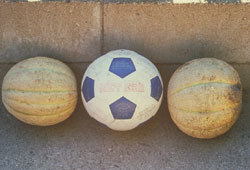 underway, a loose group of scientists and lay people has been working on this subject for a number of years. Without the benefit of funding or official laboratory premises, and having no connection with Hudson, they have managed to reproduce at least some of his claimed findings. Their work, together with that of Hudson, is summarised in a number of articles by Barry Carter on his very extensive and informative website (2). There are also several lively Internet email forums, one of which, a science working group, discusses various aspects of the chemistry and physics as well as the methodology for extracting and analysing these materials. So what conclusions can be drawn so far? It is becoming clear that, with this discovery,we are entering into a new and very complex area and are still very low on the learning curve. Indeed, it might be said that a new chapter in physics, chemistry and biology is being opened.
underway, a loose group of scientists and lay people has been working on this subject for a number of years. Without the benefit of funding or official laboratory premises, and having no connection with Hudson, they have managed to reproduce at least some of his claimed findings. Their work, together with that of Hudson, is summarised in a number of articles by Barry Carter on his very extensive and informative website (2). There are also several lively Internet email forums, one of which, a science working group, discusses various aspects of the chemistry and physics as well as the methodology for extracting and analysing these materials. So what conclusions can be drawn so far? It is becoming clear that, with this discovery,we are entering into a new and very complex area and are still very low on the learning curve. Indeed, it might be said that a new chapter in physics, chemistry and biology is being opened.
The basic fact seems now beyond doubt, both from Hudson’s work and that of the independent group, that a number of precious (and some not so precious) metals, including rhodium, iridium, gold, platinum, palladium, copper and several others, can exist in a completely different state, in which they are not metallic—being grey or white powders when isolated in the solid state. Hudson made three other main claims, which could be more arguable. He said that, in the ORMUS form of these elements, the electrons are re-arranged in such a way that they no longer participate in chemical reactions. Likewise, the bonds which normally hold metal atoms together in the solid form are lacking, so that they would be effectively monatomic. Because of this, he originally named them Orbitally Re-arranged Monatomic Elements, or ORMEs. More recent work now suggests that at least some of these may be diatomic, and also that very loose bonds can exist with certain other elements, particularly alkaline metals. Hence the generic name has been changed to ORMUS. They are also frequently referred to as the M-state of these elements.
Another, and still more radical, claim is that the electron rearrangement involved the formation of Cooper pairs, so that they
can be (or can become with certain treatments) superconductive at normal temperatures. In support of this, Barry Carter has posted a short video file showing a grey powder jumping away from a magnet. It can be argued, however, that this “grain-hopping” phenomenon does not, of itself, prove superconductivity. Without going further into this controversy, it is worth mentioning that there are a few mainstream publications which Hudson claimed could provide indirect support (3). These identify a “high-spin” state into which certain heavy metal atoms can be made to enter and in which the nucleus becomes elongated and takes on a higher value of spin. 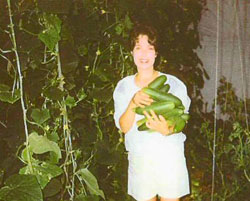 But no one has obtained this kind of matter in bulk. Hudson performed analyses on a wide variety of materials and reported finding ORMUS elements in most of the samples of soil he tested, but especially soils from volcanic regions. Other researchers later found them to be present in most samples of natural waters tested, with particularly high concentrations being present in the sea and especially the Dead Sea. One researcher has even found it in the air. (Here it is perhaps not too surprising that even a heavy element in the monatomic form could behave like a rare gas.)
But no one has obtained this kind of matter in bulk. Hudson performed analyses on a wide variety of materials and reported finding ORMUS elements in most of the samples of soil he tested, but especially soils from volcanic regions. Other researchers later found them to be present in most samples of natural waters tested, with particularly high concentrations being present in the sea and especially the Dead Sea. One researcher has even found it in the air. (Here it is perhaps not too surprising that even a heavy element in the monatomic form could behave like a rare gas.)
Hudson’s chemists made analyses of a number of plant tissues and found ORMUS to be highest in plants, especially aloe vera, which are grown in volcanic soils. They also analysed calf and pig brain tissue and obtained a remarkable five per cent of the dry-matter content. These analyses are not easy, since they require conversion of the ORMUS content back into the metal form. For analytical purposes, this occurs during the “long-burn” spectroscopic procedure used by Hudson. But to prepare the metals in bulk is a very lengthy procedure, and one far from being sufficiently worked out or described. Very few of the independent researchers have access to the facilities necessary for spectroscopy, and I know of none who is in a position to do this kind of work officially. Unfortunately, for a variety of reasons (financial and legal have been suggested), Hudson himself does not appear to be doing any more of this work.
A great deal more needs to be done on the physics and chemistry, not least to elucidate some of the extraordinary phenomena which have been observed. For example, on drying an aqueous preparation of ORMUS rhodium on filter paper in sunlight, Hudson observed it to disappear with an intense flash of light, but with no sound or shock wave. Still more strange, when working with ORMUS iridium and subjecting it to repeated heating to red heat and cooling, he found its weight to oscillate violently with each cycle of annealing—even, at one point, to lose and then regain all of its weight. This result has been incorporated into the hyperdimensional theory of Finnish theoretical physicist Matti Pitkänen (4). Independent researchers have confirmed the soundless flash of light, and there is one claim to have confirmed the weight changes. Several of them have observed another strange phenomenon: drops of liquid, containing concentrated ORMUS, forming on the outside of closed containers—especially under the influence of magnetic fields. This has led them to suppose that ORMUS atoms can pass through the walls by quantum tunnelling, and carry a little water with them. Also unexplained is the observation that certain ORMUS preparations in aqueous solution acquire a static electric charge. This can be discharged with an audible spark, after which the charge will re-form and can again be discharged an indefinite number of times.
Biological effects of ORMUS
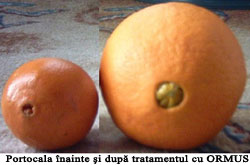
The biology of these materials is also wide open to investigation. It could be said, however, that the new chapter in biology has already been opened: in the quantum understanding of life. According to this view, the holistic properties of life are only accountable on the basis of quantum coherence; that is, the apparently random activity of biological molecules (according to classical thermodynamics) is actually coordinated by the same quantum principles which govern the action of a laser. This radical re-visioning of biology has been persuasively introduced by Dr Mae-Wan Ho (5). Further vistas in quantum biology have been opened in some exciting recent work which suggests that, while a small fraction of the DNA functions by coding for proteins, the bulk of it (the so-called “junk” DNA) operates in a way that’s independent of chemistry to inform the quantum “field” of the body.6 This, together with a number of publications which suggest the presence of superconductivity in living organisms, might support Hudson’s speculations on the close involvement of ORMUS with DNA—even that it can actually correct DNA damage (7).
Hudson foresaw that there could be great potential for these materials in industry—especially as his analyses led him to conclude that far more of these precious elements exist in the world in this form than in the metallic form. At some point, however, his uncle, who had an interest in alchemy, suggested that if he looked into this subject he might see a connection with the “white gold” that some of the alchemists had described and which had properties of healing and extending life-span.8 He therefore gave an ORMUS preparation to a very sick dog, which was likely to die from both cancer and tick fever. When the dog recovered, human volunteers began to offer to take it themselves, apparently with good results. Hudson then gave samples to a number of doctors, with the suggestion that they try ORMUS on a few of their terminal patients. In his talks, he gives graphic reports of some of the remarkable recoveries which occurred. He also mentions that he gave a sample of ORMUS rhodium to a number of laboratories, including Merck & Co. and the US National Cancer Institute, which tested it on cultures of cancer cells and found it not to be toxic to these cells.
Since then, numbers of independent producers have sprung up, making and selling ORMUS concentrates prepared from various sources, including sea water, water from deep springs, salt mined from mineral deposits and certain medicinal plants such as aloe vera. There are now probably some thousands of people taking these products. While most of them seem to have had no history of serious illness, many have obtained improvements in general health and energy, often including changes in attitude which they take to be spiritual. Nevertheless, a few reports can be found from within the forums of ORMUS-attributed recoveries from serious illnesses including cancer. All of the data on human health, however, has to be classed as anecdotal. There have been no clinical trials, not even any collated tables of results. And here, of course, it has to be understood how much care needs to be taken not to make medical claims for materials such as these, for which no precise analyses exist.
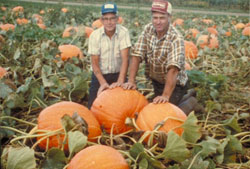
While eschewing medical criteria, however, one can show a more immediate effect of ORMUS by certain techniques widely used to monitor the effectiveness of energy medicine therapies. One is dark-field microscopy of the blood. In a few hours after taking ORMUS (as with many other beneficial treatments, such as acupuncture, massage, etc.), a person’s red cells are shown to become more rounded and well-separated and the amount of debris in the serum decreases (9). There are also reports from EEG studies of increasing balance between left and right hemispheres of the brain. Another promising technique is bioelectrography. This is a more general term to cover Kirlian photography and later developments from it. It has been elaborated into a quantitative science by Dr Konstantin Korotkov (10), (11).
Here I report my own experience. I had been taking a proprietary preparation of ORMUS for about one year, and had been aware of increased energy and a feeling of “well-being”. For the test, I used the GDV (gas discharge visualisation) equipment designed by Dr Korotkov. First, I ceased to take the ORMUS for a period of two weeks, then took an initial (control) reading with the GDV, and immediately after this I took a large dose of ORMUS (six times the recommended daily dose), and then took further readings at intervals subsequently. Figure 1 [not shown here; Ed.] shows the time course of the response, in which the area of the image rose to a maximum of 1.5 times the control at about four hours, then declined slowly over the next 12 hours. From Dr Korotkov’s extensive work with the GDV, it is clear that, of the many parameters of the image which can be analysed, the area is the one most indicative of general health. For readers who want to make some of these products themselves, see descriptions of methods on Barry Carter’s website (12). The simplest procedure involves merely raising the pH of a solution of sea salt to between 10.6 and 10.78. The resulting precipitate, mainly magnesium and calcium hydroxides, carries down the ORMUS elements with it. It only remains to wash out the bulk of the salt.
ORMUS results in agriculture
In view of the difficulties in obtaining scientific data on human health, most of the emphasis must go to the effects on plants. These are unarguable, and are indeed phenomenal. They can be seen on several websites (13). The preparation most used is the simplest and cheapest: a crude concentrate made from sea water. There is in fact a history, prior to the discovery of ORMUS, of the use of products from the sea, particularly seaweed, in agriculture. Some people have even reported good results from putting unaltered seawater on the land. Dr Maynard Murray14 recorded a great deal of data on the health of animals fed on grain from sea water–treated land.
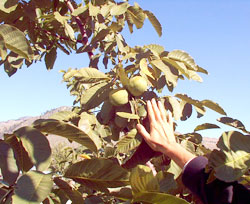
One experiment was done with a strain of mice, of which 90 per cent normally develop spontaneous breast cancer. Of those fed the grain from treated land, however, only 55 per cent developed the cancer, and in the second generation this figure was reduced to two per cent. Of course, land so treated would eventually become oversalinated and the yields would decrease. The procedure to concentrate ORMUS, however, probably increases its ratio to salt about 80 times. We note Dr Murray’s comment that human populations where malignancy is rare tend to be found in areas where there is “very little egress of water to the sea”, so that the vital elements washed down from the mountains remain to be reutilised. Very little of the concentrate is required: from four to 20 litres per acre [~0.405 hectare], depending on the crop.
The results of using ORMUS concentrate, however, far outstrip those with sea water. Indeed, without the photographic evidence, they would be hard to believe. For example, a walnut tree treated over several years has grown to over twice the height of control trees and now produces six times the weight of nuts—and the nuts themselves are the size of tangerine oranges! A plum tree produced, in the first year of treatment, individual fruit nearly twice the weight of those from the control tree, and in the second year they were over How has it come about that plants, land animals and humans seem to be chronically deficient in these elements? Since they are so concentrated in sea water, one might suppose that, during the life of the Earth, they have been largely washed into the sea. This could provide a partial explanation for the increasing desertification of so much of the land. And the general decline in plant growth would contribute to the rise we are seeing in atmospheric carbon dioxide, and thus to global warming.
Treating large areas of land could thus have immense benefits in offsetting global warming. One could imagine spraying large
areas, especially forests, from aeroplanes. In addition, to replace fossil fuels, it would be possible to produce much greater
quantities of biofuel crops on smaller areas of land. Time is short. If we are to avert the worst environmental catastrophe, many kinds of actions need to be taken. Among these, a very important role could be played by treating land with these sea
water products. We need to start doing this now. That is why I ask anyone reading this article to make every effort to spread information about ORMUS.
About the Author:
Roger Taylor, PhD, BVSc, has a PhD in immunology and set up the UK Medical Research Council’s Immunobiology Research Group at the University of Bristol, where he directed work mainly on immunological tolerance. He has spent the last 18 years independently studying the scientific basis for subtle energy. Dr Taylor is science editor/writer for Caduceus, and his ORMUS article is also published in Caduceus, issue 71, Spring 2007 (Caduceus Journal Ltd, 9 Nine Acres, Midhurst, West Sussex GU29 9EP, UK, telephone +44 01730 816799, website http://www.caduceus.info). He can be contacted by email at rogerbt@onetel.com.
Endnotes
1. http://www.subtleenergies.com/ORMUS/patents/patents.htm
2. http://www.subtleenergies.com/ORMUS/tw/articles.htm
3. http://www.subtleenergies.com/ORMUS/research/research.htm
4. http://www.helsinki.fi/~matpitka/index.html
5. Ho, Mae-Wan, Dr, The Rainbow and the Worm, World Scientific, Singapore, 1998, 2nd ed.; also, articles by Dr Mae-Wan Ho at http://www.i-sis.org.uk/
6. Gariaev, Peter et al., “The DNA-Wave Biocomputer in “Crisis in “Life Sciences: The Wave Genetics Response”, http://www.emergentmind.org/gariaev06.htm
7. Paine, D. A. and W. L. Pensinger, “A Dynamical Theory Describing Superconductant DNA”, International Journal of
Quantum Chemistry 15(3):333-341, 1979; Carter, Barry, “ORMUS, DNA Repair and Health”, http://www.subtleenergies.com/ORMUS/tw/dna.htm
8. Gardner, Laurence, Lost Secrets of the Sacred Ark, Harper Collins, 2004, ISBN 0-0071-4296-X, and http://www.graal.co.uk/index.html
9. Very likely this would correlate with the standard hospital test for the rate of erythrocyte sedimentation.
10. Korotkov K. G., Dr, Human Energy Field, Backbone Publ. Co., Fair Lawn, NJ, USA, 2002, ISBN 5-8334-0330-8.
11. Caduceus, issue 67, winter 2005, pp. 30-32
12. Access through website cited in endnote 2.
13. Dudley, Dana, “ORMUS Plants” at http://www.subtleenergies.com/ORMUS/tw/ORMUSplants.htm; http://www.sea-crop.com; http://www.c-gro.com
14. Murray, Maynard, Dr, Sea Energy Agriculture, Valentine Books, Winston-Salem, North Carolina, USA, 1976, ISBN 0-911311-70-X
15. Some information on mycorrhiza can be found in: Wakeford, Tom, Liaisons of Life, John Wiley & Sons, Inc., 2001,
ISBN 0-471-39972-8
yogaesoteric
May 2008
Also available in:
 Română
Română

good place to share